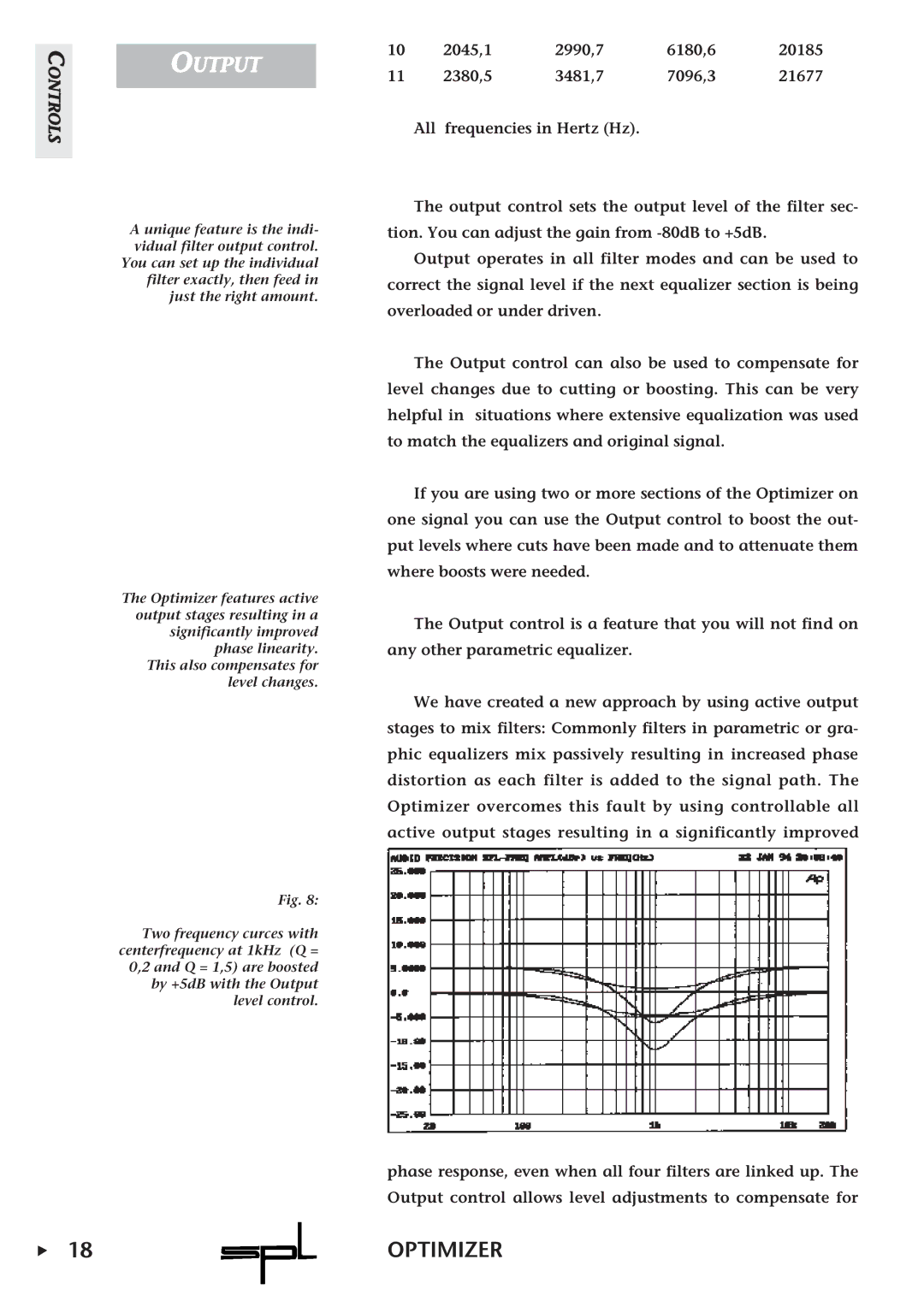
CONTROLS
OUTPUT
A unique feature is the indi- vidual filter output control.
You can set up the individual filter exactly, then feed in just the right amount.
The Optimizer features active output stages resulting in a significantly improved phase linearity.
This also compensates for level changes.
Fig. 8:
Two frequency curces with centerfrequency at 1kHz (Q = 0,2 and Q = 1,5) are boosted by +5dB with the Output level control.
10 | 2045,1 | 2990,7 | 6180,6 | 20185 |
11 | 2380,5 | 3481,7 | 7096,3 | 21677 |
All frequencies in Hertz (Hz).
The output control sets the output level of the filter sec- tion. You can adjust the gain from
Output operates in all filter modes and can be used to correct the signal level if the next equalizer section is being overloaded or under driven.
The Output control can also be used to compensate for level changes due to cutting or boosting. This can be very helpful in situations where extensive equalization was used to match the equalizers and original signal.
If you are using two or more sections of the Optimizer on one signal you can use the Output control to boost the out- put levels where cuts have been made and to attenuate them where boosts were needed.
The Output control is a feature that you will not find on any other parametric equalizer.
We have created a new approach by using active output stages to mix filters: Commonly filters in parametric or gra- phic equalizers mix passively resulting in increased phase distortion as each filter is added to the signal path. The Optimizer overcomes this fault by using controllable all active output stages resulting in a significantly improved
phase response, even when all four filters are linked up. The Output control allows level adjustments to compensate for
18 | OPTIMIZER |
